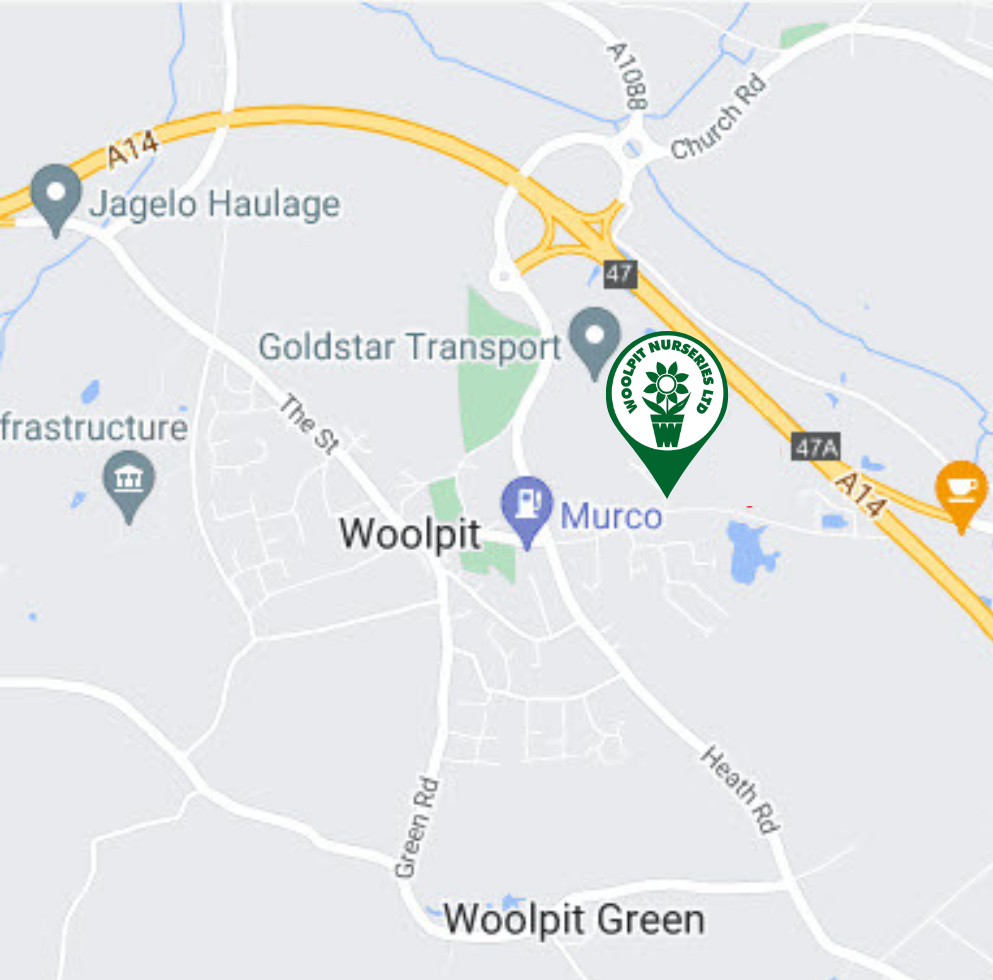GREAT VALUE OFFERS,
SAVE MONEY!
4 x large Perennials £16 (£4.45 each)
3 x 2 litre Shrubs £21 ( £7.95 each)
2 x Grasses/ Heucheras £16 (£8.95 each)
Woolpit Nurseries stock an extensive range of durable and attractive garden pots and containers. We have all shapes and sizes in frost proof and frost resistant materials, made of plastic and traditional terracotta. There’s something for every taste and style – you’re sure to find something to enhance your garden or patio at a very reasonable price!
We look forward to helping you transform your garden with our premium plants and friendly service.

Decorative garden pots and planters can create a real feature in your garden. For example, terracotta garden pots can give an Italian Mediterranean vibe to your garden.
Choosing the right patio containers and garden pots should allow your plants or shrubs to have space to fourish and look great.
By considering factors such as size, shape, material, and drainage, you can select garden pots and patio containers that not only enhance the beauty of your outdoor space but also provide optimal growing conditions for your beloved plants and shrubs. Visit Woolpit Nurseries today to explore our extensive selection and find the perfect pots for your gardening needs.
At Woolpit Nurseries, we’re passionate about helping you create the garden of your dreams. Our extensive range of garden pots and patio containers is designed to elevate your outdoor space, offering both aesthetic appeal and practical functionality. Whether you’re a novice gardener or a seasoned expert, our selection caters to all tastes and gardening needs.
Unleash Your Creativity:
With our diverse range of materials, shapes, and sizes, you’ll have the freedom to unleash your creativity and design a garden that reflects your unique style. From rustic terracotta pots to sleek ceramic planters, there’s something to suit every preference and complement any garden theme.
Quality You Can Trust
At Woolpit Nurseries, quality is our top priority. We source our garden pots and patio containers from trusted suppliers, ensuring durability and longevity. Some made from frost-proof and frost-resistant materials, built to withstand the elements, providing years of reliable service and enjoyment.
Enhance Plant Health
Choosing the right garden pots and patio containers isn’t just about aesthetics—it’s also about promoting plant health and vitality. With proper drainage and ample space for root growth, our pots create the ideal environment for your plants to thrive. Say goodbye to waterlogged soil and hello to flourishing greenery.
Affordable Luxury
Transforming your garden doesn’t have to break the bank. At Woolpit Nurseries, we offer premium-quality garden pots and patio containers at competitive prices. Enjoy the luxury of beautiful outdoor decor without compromising your budget.
Ready to take your garden to the next level? Visit Woolpit Nurseries today and explore our stunning collection of garden pots and patio containers. With great service, we’re here to help you turn your gardening dreams into reality. Experience the Woolpit Nurseries difference and discover why we are Suffolk’s premier destination for all things garden-related.
4 x Large Perennials for £16 (£4.45 each)
3 x 2 Litre Shrubs for £21 (£7.95 each)
2 x Grasses/ Heucheras for £16 (£8.95 each)